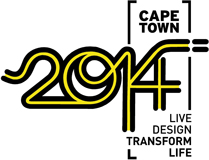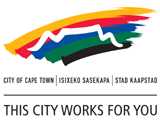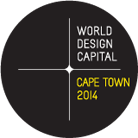Few architects can boast that they’ve had elephants as clients. But
Rahul Mehrotra can. On the second day of
AZA 2012 at
Cape Town City Hall, the Indian architect, urban designer, architectural conservationist and teacher presented his Hathigaon village project in the state of Rajasthan, as part of which he had to design housing for more than 100 elephants and their
mahouts (caretakers).
The site, an old sand quarry, was a desolate landscape with no sense of place. So, as part of the design strategy, Rahul first looked at structuring the landscape and creating a series of water bodies to harvest the monsoon rain runoff. Water is not only a crucial resource in the desert climate of Rajasthan but also an essential part of elephants’ daily life: Bathing is not only vital for the elephants’ health but also helps strengthen the bond between handler and animal.
According to Rahul, mahouts in this region do not have a high social status and so, as part of this project, he also looked at ways to help foster a sense of pride in the community. Clusters of shared space at different hierarchies (public, private and semi-public space) helped to build a sense of community among the inhabitants. Courtyards and pavilions were used to supplement otherwise small spaces.
The intent in the design was to make space – both in terms of basic spatial configurations such as creating private spaces with open skies and the minimal use of finishes – so that inhabitants could personalise and transform their own homes over time.
In this way, Rahul helped transform a barren landscape into a lush sanctuary for man and elephant. The ponds, which were sealed using natural clay, retain water for most of the year and an extensive tree plantation programme has created habitat for bird and animal life to flourish.
The project embodied many of the principles Rahul spoke of in his talk, such as the softening of thresholds and the importance of building an ecology rather than static buildings. He seemed almost baffled by the drive to create static cities of non-descript reflective glass boxes that don’t engage with the context and exclude any possibility of interaction or evolution over time – buildings which he terms “the architecture of impatient capital”.
By softening thresholds, Rahul helps dissolve the hard boundaries and barriers between different sectors of society. He aims to create buildings that are contextual and reflect a sense of the place, history, craft, material and skills of the area. He also designs buildings that are permeable either physically or even just visually, so people can connect even if just momentarily. He also manages to apply the same sensitivity, ingenuity and economy to residential, corporate and campus work.
Rahul’s presentation was met with spontaneous applause and a standing ovation – suggesting that his approach touched a nerve with the audience. Let’s hope that that moment translates into a new impetus to resist “the architecture of impatient capital” and craft more considered, responsive buildings.
- Architecture ZA was a three-day conference held at Cape Town City Hall during September 2012, and explored the idea of re-scripting architecture during a series of lectures, exhibitions and workshops. Check out our coverage of day 1, and visit The Fringe for reflections on AZA's 2-day master class.
-
Join the conversation with Architecture ZA on , and become part of the community on .





